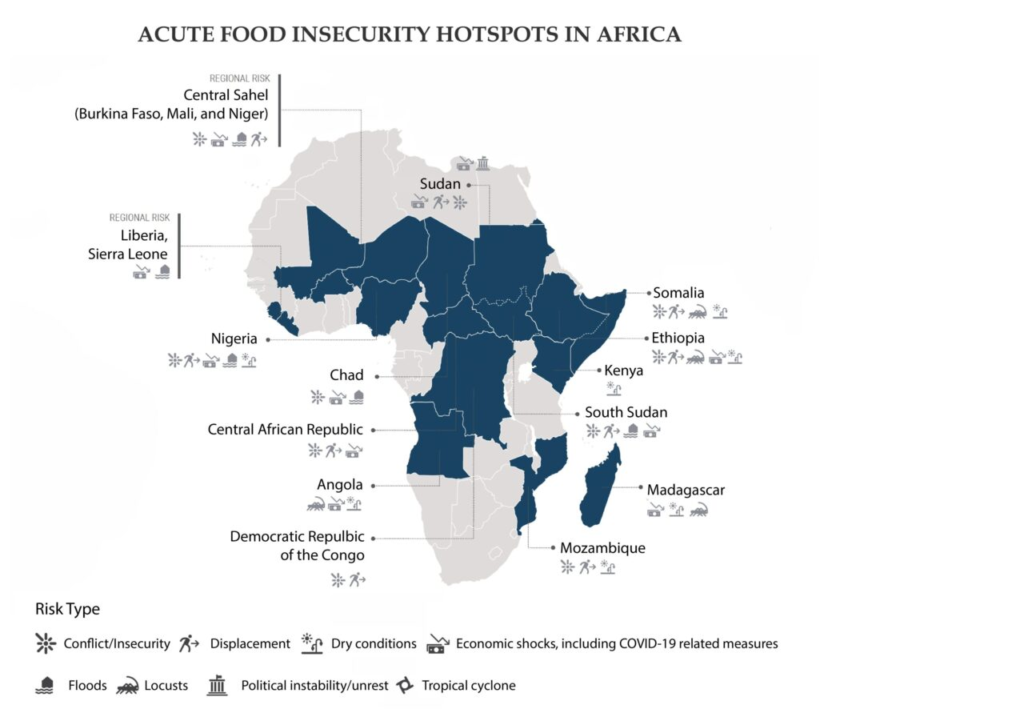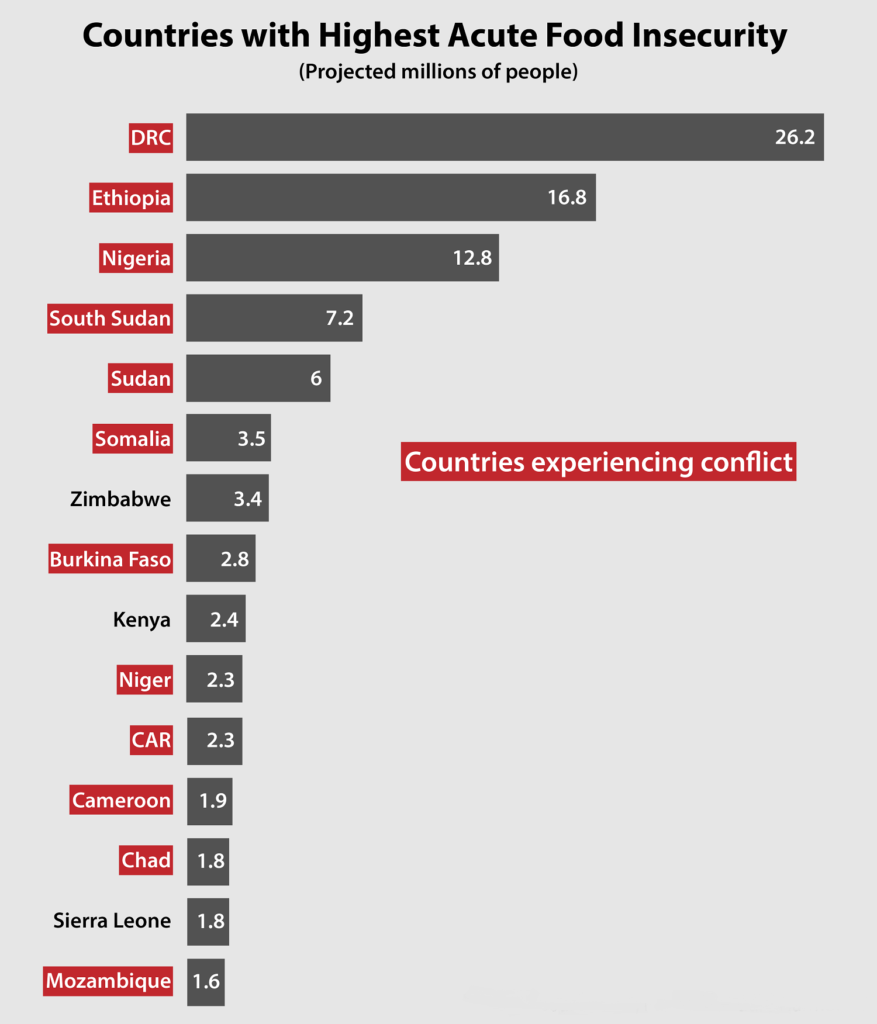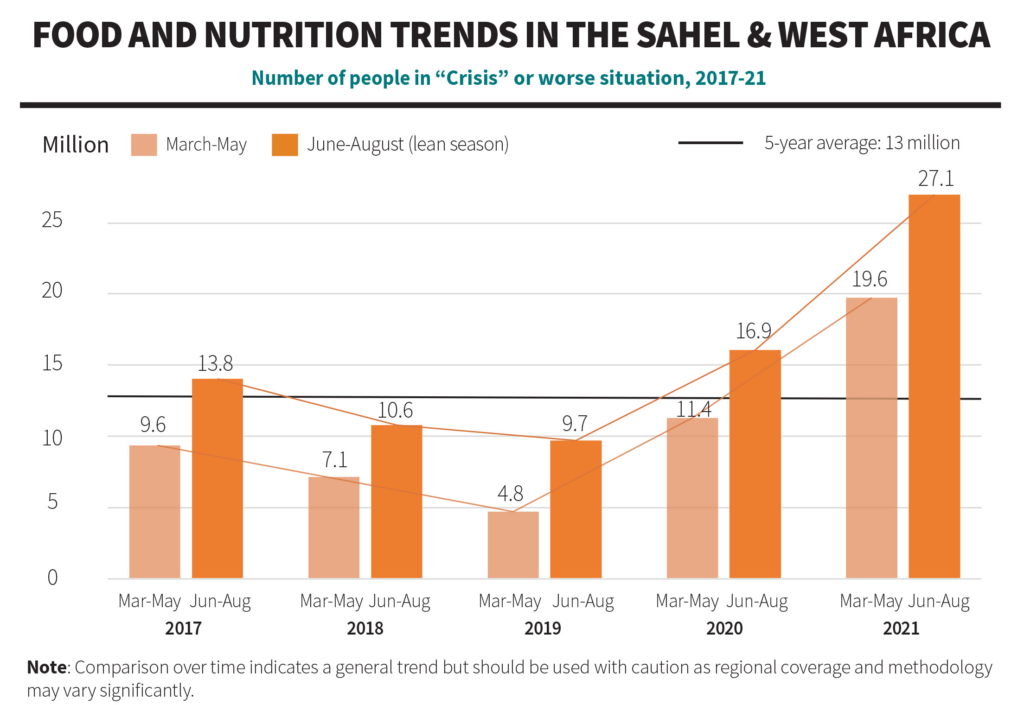Conflict remains the primary driver of acute food insecurity in Africa, imperiling over 100 million people.

Highlights
An estimated 106 million Africans face acute food insecurity—an Integrated Food Security Phase Classification (IPC) of Phase 3 (crisis) and above. This represents a doubling in the number of people experiencing acute food insecurity since 2018.
The FAO and WFP report that 400,000 Ethiopians, 100,000 South Sudanese, and 28,000 Malagasy face Phase 5 (famine) levels of food insecurity.Conflict
Conflict continues to be the primary driver of acute food insecurity on the continent. Twelve out of the 15 African countries facing the greatest food insecurity presently are also experiencing conflict.
The Democratic Republic of Congo (DRC) is experiencing “one of the worst humanitarian crises in the world.” An estimated 26.2 million people (about 27 percent of DRC’s population) are facing acute food insecurity (IPC Phases 3 & 4), the largest of any single African country. This is primarily because of ongoing armed violence and intercommunal conflicts in the eastern and northeastern regions of the country as well as the population displacement such violence has caused.
Somalia has experienced year after year of acute food insecurity largely due to conflict, population displacement, and disruptions in food production and transportation. Nearly 3.5 million people across Somalia are dependent on outside humanitarian assistance.
Burundi has been in a state of crisis since the unconstitutional power grab by former president Pierre Nkurunziza in 2015. Over 1 million Burundians are experiencing high levels of acute food insecurity.
Not only does conflict cause death and destruction, it also leads to mass displacement in countries such as Mozambique, Ethiopia, and northeastern Nigeria, further exacerbating food insecurity.Regional Variations
East African countries are experiencing the greatest levels of food insecurity, in terms of total population affected. In addition to Ethiopia, South Sudan, Sudan, and Kenya each have more than a million people facing acute food insecurity.
Two-thirds of Central African countries facing acute food insecurity are experiencing conflict. The DRC stands out in this regard with over 26 million facing acute food insecurity, more than any other country in Africa.

Estimates of the number of people experiencing acute food insecurity in the Sahel and West Africa have tripled in the past 2 years, largely attributable to the worsening insecurity in Nigeria, Burkina Faso, Niger, and Mali.Climate Events
In Madagascar, around 1.3 million people are estimated to be experiencing acute food insecurity, including almost 28,000 facing famine. Three years of consecutive severe droughts have depleted harvests and reserves, reducing access to food in Madagascar’s Grand South region.
In Angola, the “worst drought in the last 40 years” has led to poor harvests in the agricultural provinces of Cunene, Huila, and Namibe. Food prices have spiraled upward, resulting in higher than normal levels of acute food insecurity.
